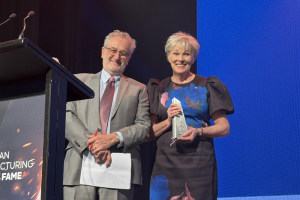During the keynote session for the third day of the virtual AIP Australasian Packaging Conference, two experts gave an in-depth presentation on the nitty gritty of how to foster a circular economy for packaging materials.
Australian Food & Grocery Council (AFGC) director of sustainability Barry Cosier started off the session with a detailed analysis of the present and future of the Australian recycling system.
He pointed to the iconic Aussie spread Vegemite as a good example of circular economy thinking. It takes brewers yeast – a waste product – and transforms it into a new product.
Cosier said, in building a circular economy, there needs to be some unity.
“Without a consistent plan across all stakeholders moving in the same direction at the same time, there is a big risk of people making ill-informed decisions,” he said.
Cosier said to help improve the recycling rates of materials, especially plastics, material quality standards must be implemented, and they should be designed in reverse supply-chain order, starting with the resin companies that are receiving and processing the recycled material. From there, he said, the waste sector can know what infrastructure and equipment is needed to sort and process the materials. And from that, kerbside recycling standards can be developed to ensure a reliable and clean feedstock.
“And one final step is very critical: implementing traceability so brand owners are confident the material is recycled,” Cosier said.
Also in the session, Pact Group executive general manager, sales, marketing and innovation Siobhan McCrory spoke about the company’s sustainability journey.
She said 10 years ago very few of Pact Group’s customers had an interest in the environmental impact of their packaging.
“It’s fair to say things have changed enormously in the past ten years and the appetite for change is growing,” she said.
She said many brand owners are struggling with the extra cost that food-grade rPET brings. But, she said, they also want to go from zero recycled content to 100 per cent.
“Why not start with ten or twenty-five per cent, which is a far more economic way to start the journey,” she said.
“To get started, ten or twenty-five per cent is a good first step towards the 2025 goals while the recycling infrastructure is being created.”






